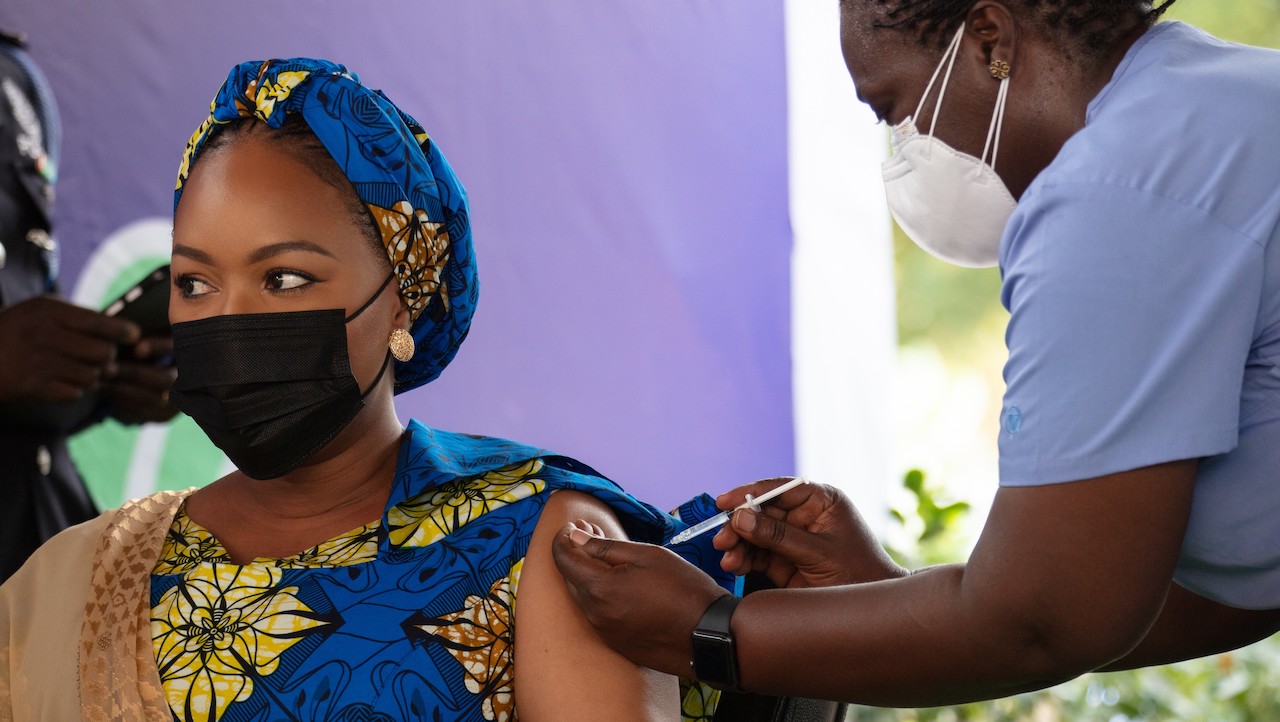In the very early stages of the COVID-19 outbreak in 2020, it became clear that the pandemic could only be effectively tackled with a vaccine that would be broadly and equitably used across the globe. This is the challenge we set ourselves when partnering with Oxford University to produce and supply a COVID-19 vaccine at no profit.
The result was a vaccine developed in less than a year, with over 3 billion doses released for supply to more than 180 countries. Based on data published in The Lancet and a modelled outcomes analysis by Airfinity, the vaccine is estimated to have helped save over 6 million lives in the first year of vaccination.
AstraZeneca was the first and largest contributor in 2020 and 2021 to the public-private COVAX initiative co-led by Gavi, the Vaccines Alliance, the World Health Organization (WHO) and others, to enable global equitable access. We also worked with COVAX to facilitate donations of our vaccine from EU Member States around the globe.
Partnerships as the foundation
Effective public-private partnerships were critical to our response. Our partnership with Oxford University allowed us to pool world-renowned expertise in vaccinology with large scale manufacturing at a critical moment in the pandemic.
Partnerships with governments, including with the European Commission, together with the Coalition for Epidemic Preparedness Innovations (CEPI), supported R&D and manufacturing through Advance Purchase Agreements (APA).
We shared the vaccine technology with more than 20 different supply partners across the globe, finding and training contract manufacturing organisations (CMOs), and forging regional sublicensing agreements in countries with significant manufacturing capacity.

Looking to the future
What learnings can we take away from this success? Extending the European Medicines Agency’s (EMA) rolling review process beyond the exceptional COVID circumstances would be of immediate help and could encourage additional research projects to address other health needs.
Meanwhile, policymakers should continue developing an enabling environment for innovation.
This should, firstly, include investments in manufacturing infrastructure and trained personnel (an “army reserve” for pandemic preparedness) to support successful technology transfer. In addition, early investment in development and manufacturing by governments in collaboration with industry will secure capacity and enable access, as we saw with the Biomedical Advanced Research and Development Authority (BARDA) in the US. We believe the Health Emergency Preparedness and Response (HERA) can play a similarly important role in the EU.
Secondly, further harmonisation of standards would enable even quicker access to markets. Here too, the EU can play an important role by working with health authorities worldwide to achieve efficient regulation.
Thirdly, improved digital infrastructure is also critical to accelerating clinical trials. We need to continue investing in data governance and systems required, including the creation of a European Health Data Space. This will support strong evidence generation, and further accelerate development timelines.
We believe the EU has a key role to play in improving public health globally. In addition to determining short- and long-term policy fixes, policymakers should continue to seek and drive equitable access to health solutions by partnering with industry and stakeholders across the healthcare ecosystem, as was done during the pandemic with the vaccine. It may not be able to stave off future pandemics, but it will at least leave us better prepared and equipped.

